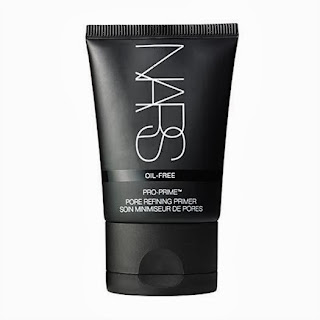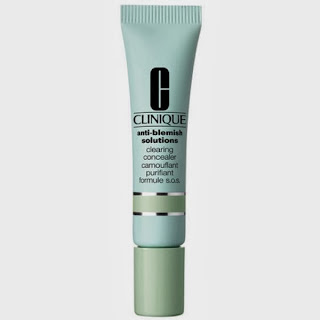BASICS 1: Primer, Concealer, Foundation and Powder
Welcome to our new blog channel BeautyBar101! I hope this blog post as well as the ones to come will help you guys especially the newbies out with all things make up. From our very basic introductory blogs to our more advanced FUN & ARTISTIC ones we hope you enjoy the read!
Primer
What is Primer?
Primer is essentially used as the first layer of product on your face, keeping it soft and smooth and giving your concealer and or foundation (which you will place over it) a fresh look all day. Although that is essentially what primers do, there are a range of different primers out there that offer even more! Make up brands such as Maybelline, Clinique and Nars realise that people have different skin types (oily, dry & combination) and also skin problems (hence acne) so they have added bonuses in their products, which will benefit your skin more than using another primer.
Different types of Primer:
There are many different primers out there and being new to makeup you may not know which one is best for you. Primers range from liquid to cream. If you have any blemishes on your skin or scaring it is recommended that you use a cream primer as the cream can smooth over your skin and fill any gaps. You should consider getting an oil free primer, especially if you have an oily skin type and or have acne.
How to apply:
How to apply primer usually depends on the individual product. Check the back of the product for instructions as they are usually labelled on.
Typically with liquid primers you should take a pea size about and spread the product onto your fingers and pat it onto your face. Avoid rubbing the product into your face and piling up the primer; only a small amount is needed. Remember to allow the product to completely dry before putting on any other makeup.
Typically with cream and gel primers you add a small amount onto your fingers and smooth over your face, focusing more on problem areas. Avoid rubbing the product into your face and piling up the primer; only a small amount is needed. Remember to allow the product to completely dry before putting on any other makeup.
Concealer
What is concealer?
Concealer is essentially used to cover up any redness or scars that may still be visible under foundation alone. Concealer is typically the next step used after applying primer; although some prefer to put it over their foundation.
Different types of Concealers:
Concealers come in different bases such as Liquid, Cream and Gel. They are also known to range in colour as most concealers come in different skin tones there are also green concealers.
Green concealers comes as an option for those who wish to easily erase red marks they may have, as mixing the colours green and red together you will usually see the two colours subtract each other and turn clear.
Liquid and Cream concealers do basically the same job in coverage. Note some people may prefer a liquid concealer over a cream one and vice versa, as everyone has different skin. It is recommended that you try a few different product types as comparing products yourself will allow you to see for yourself what works best for you.
Gel concealers are usually tacky for a reason. If you have a problem area such as acne breakouts you may want to get one of these, as they have a higher coverage consistency that will hide away blemishes a lot better than liquid and cream concealers. Note that having a higher coverage may seem great, but to avoid becoming a cake face stick to using gel concealers on problem areas only as using it all over your face will not look good - trust me!
How to apply:
The professional thing to say here is to use a concealer brush to apply and concealer whether it be liquid, cream or gel. Although a brush is a great tool to use (and I do recommend buying a brush) fingers are always going to be the easiest option. Please note to wash your hands thoroughly before touching your face and especially if your using your fingers to put on make up as you don’t want to as any bacteria to your face.
Weather you are using a brush or a finger add a small amount and pat it onto the areas you wish to conceal and blend it out. Remember to wait for the product to dry (if it needs drying) before applying any foundation etc.
Foundation
What is Foundation?
Foundation is essentially a face product (although may be used in other areas) used to create an even and flawless completion to the area applied. Foundation may also be used to cover up any blemishes and or birthmarks.
Different types of Foundations:
Foundations usually come in 3 different formats; liquid, cream and powder.
Liquid foundations: Recommended for dry skin
Powder: Recommended for oily skin
Cream: Recommended for those who favour the dewy look
Although what is labelled above is what the “professionals” recommend it is best to test out different foundations yourself to see what you prefer. Liquid foundations seem to be the most popular!
How to apply:
There are 2 different tools that you may consider to apply your foundation with, the 1st one is a stipple brush and the 2nd one is a foundation brush.
1. Stipple Brush:
Known to create a flawless airbrushed finish. Apply a dab of foundation onto the brush and stipple it all over your face, wait for the foundation layer to dry then repeat if necessary to necessary areas.
2. Foundation Brush:
Known to create a smooth-looking finish. Apply a dab of foundation on the brush and portion that dab on different areas of your face such as the forehead, nose, both cheeks and chin. After you have foundation in all areas spread the foundation smoothly around your whole face - don't forget your neck. Add another layer if you prefer after the previous layer has dried.
Powder
What is Powder?
Powder is essential when wearing make up, weather it just be concealer, foundation or both. Powder is the last product to be applied to your face as it eliminates shine and stops your face from melting off pretty much!
Different types of Powder:
The 2 different types of powder you can get are pressed powder and loose powder. Both basically become the same thing once on the powder brush (powder). Although the same powders also range in what they can do for you as there are powders which come tinted in a colour (can be used as a bronzer) and ones which come translucent (no colour) which can be piled on without looking caked face as it is colourless.
How to apply:

With a fluffy powder brush press the brush into the powder making sure there is an average amount of powder on the brush (be careful not to pile loose powder onto the brush) and dab it all over your face before you brush it in lightly in circular motions. Remember to reapply throughout the day or night when you start to feel oily or want a touch up.
Remember practice makes perfect! Yes you will most probably buy products and regret it but just remember everyone has a different skin type whether it be dry, oily or combination; some products may be heaven for one girl / guy (yes we love you too) but not so good for another. Get to know what works best for your skin type.
Remember to follow us on Twitter for regular updates on what we are doing!
Oh and remember to subscribe to our blog!
Stay tuned for our next blog: BASICS 2: Contour, Highlight & Blush!
Victoria Jakubowski
pictures by:
http://www.youtube.com/watch?v=KVUYzBvjKYw
http://www.narscosmetics.com/complexion/primers/?d=true
http://www.pinkydiamonds.com/2012/06/loreal-base-magique-primer.html
http://www.mankind.co.uk/clinique-anti-blemish-concealer-corrective-green-10ml/10364972.html
http://www.sigmabeauty.com/individual_makeup_brushes_s/163.htm
http://crystalis007.com/2011/10/05/mac-matchmaster-foundation/
http://www.faceofaustralia.com.au/products/face/translucent-loose-powder.aspx










No comments:
Post a Comment